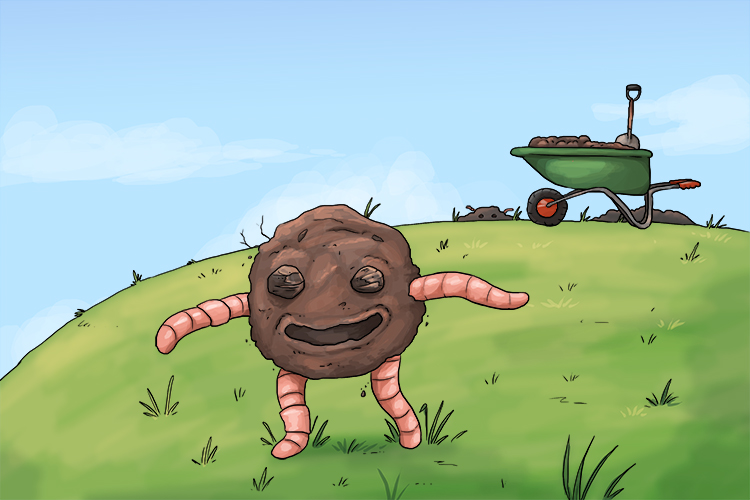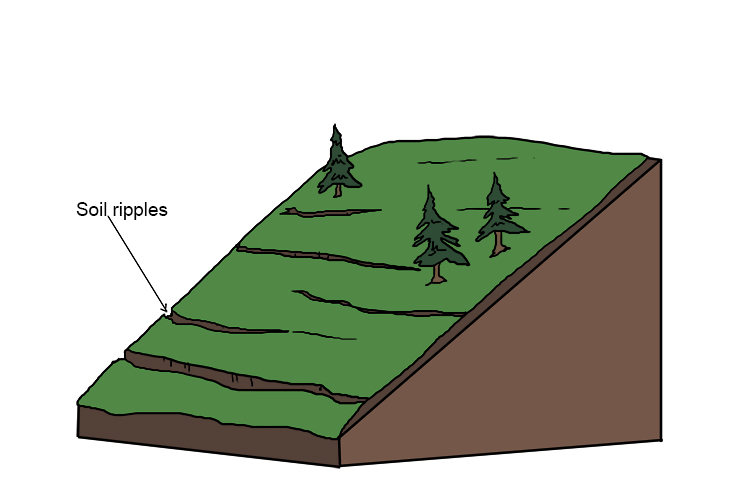Soil Creep – Slowest of mass movements, occurs on gentle, well vegetated slopes. Moves because of the way the soil particles repeatedly expand and contract in wet and dry periods
To remember the meaning of the term Soil Creep, use the following mnemonic:
The soil started to creep (soil creep) downhill - but so slowly that no one noticed.


The soil may move less than a centimetre a year, but over time the results can be seen in small, step-like terraces on hillsides.
To understand soil creep, think of a sandcastle. It will only stand up when it is made with damp sand – the water offers cohesion to the sand, binding the sand particles together. However, pouring water over the sandcastle destroys it, because too much water fills the gaps between the grains, creating a slip plane between the particles and causing them to slip and slide away.
It is the same with soil creep on hillsides. Dampness helps the hillside to stay put, but after a lot of rain the gaps between the grains become saturated, causing the ground to slide along the slip plane it creates.




